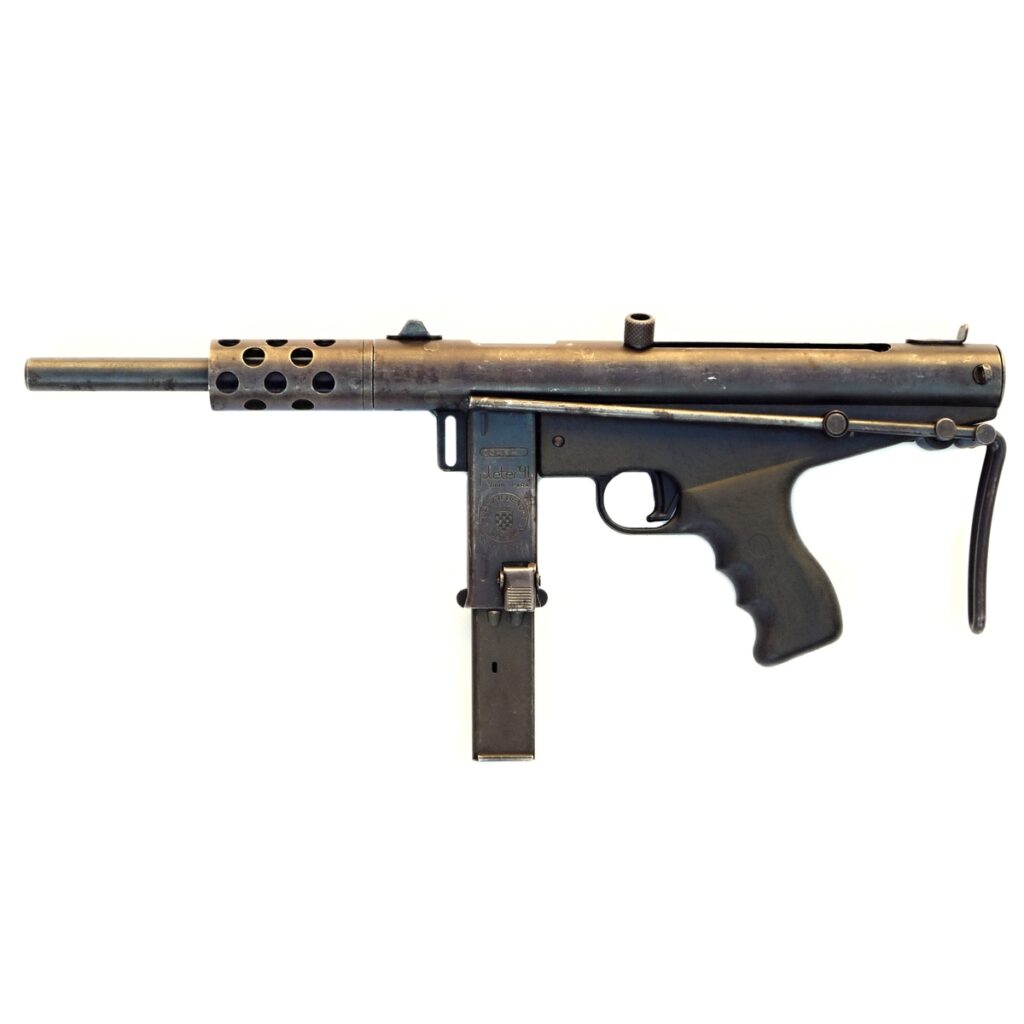
07 Croatian submachine gun Pleter 91, 1990s
Fotogalerie
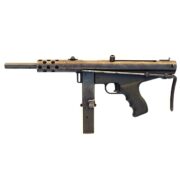

The Croatian War of Independence from 1991 to 1995, which began with the disintegration of the Socialist Federal Republic of Yugoslavia (SFRY), brought not only suffering and loss of life, but also gave birth to one phenomenon: the production of automatic weapons in small workshops and factories that had previously had nothing to do with arms production.
Since 1991, the still existing Oroplet woodworking plant in Pleternica, Croatia, has been producing a submachine gun of simple design with a dynamic breech block and an extendable shoulder rest. To facilitate production, the designers used Israeli UZI submachine gun magazines for 25 or 32 rounds of 9 mm Luger ammunition. A relatively long magazine well with a low magazine catch of the same design as the Israeli weapon was used to grip the gun during firing. The design of the barrel and the protective body was apparently inspired by the British Sten Mk 2 submachine guns, with the difference that the barrel jacket was locked in the breech housing by a transverse bolt in the lower part. Unlike other Croatian “homemade” submachine guns, the Pleter was not equipped with a firing mode switch, so it only fired in full auto mode.
The number of Pleter submachine guns produced is still unclear, but it can be assumed that production did not reach a large volume. Even Croatian sources are not clear about when Oroplet ceased production of weapons. However, it can be assumed that this happened at the end of the War of Independence in 1995.
Aktuálně
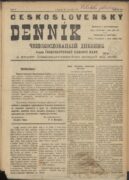
Československý deník sehrál v životě legionářů v Rusku velmi důležitou roli. Poprvé vyšel v prosinci 1917

Děkujeme za podporu pro válečné veterány. Sbírka DiGiMÁK vynesla 450 tisíc korun
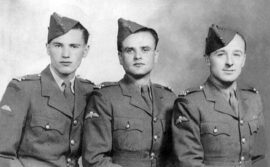
Tak trochu zamrzlé spojení
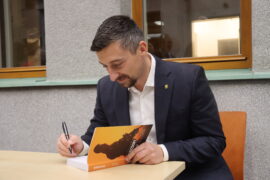
Válečný veterán Petr Matouš pokřtil v Armádním muzeu Žižkov svou knihu. Patronkou je i ministryně obrany Jana Černochová








